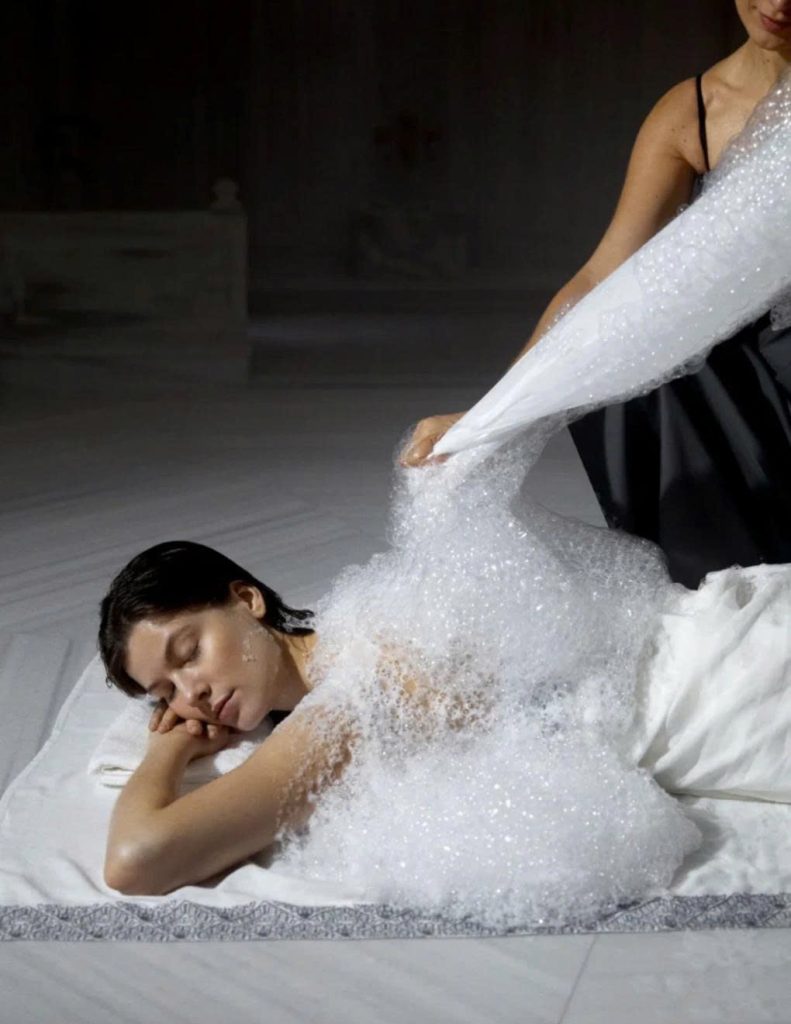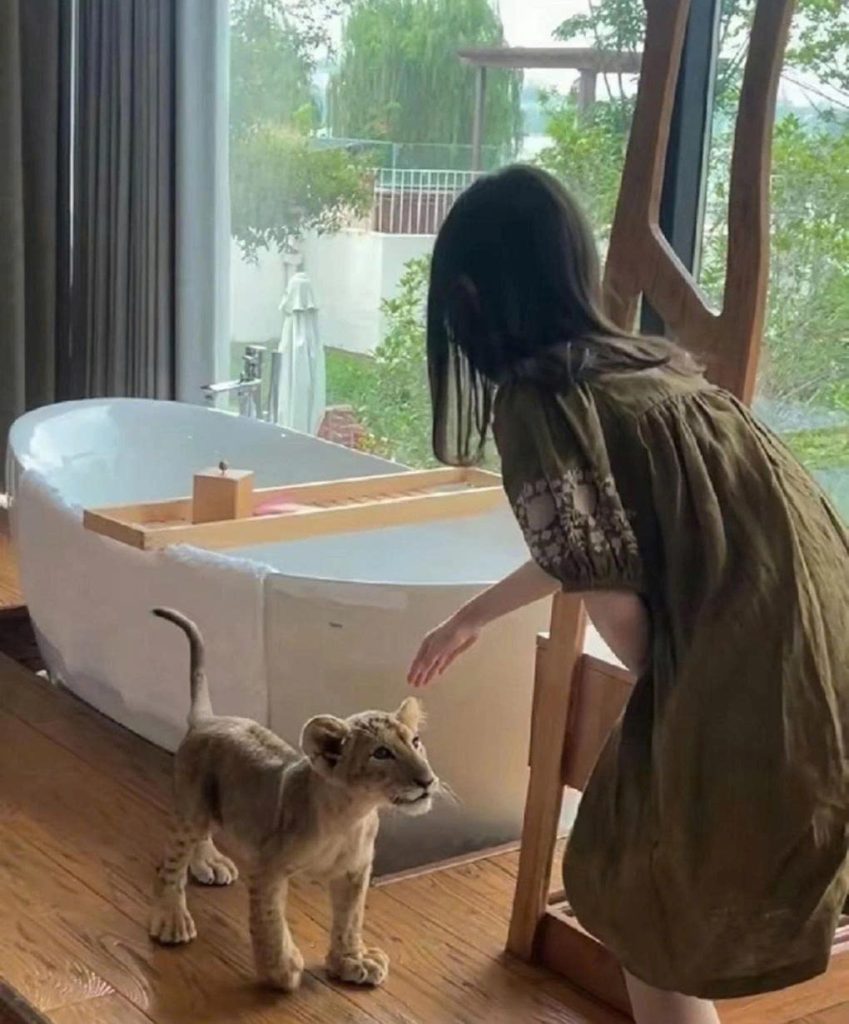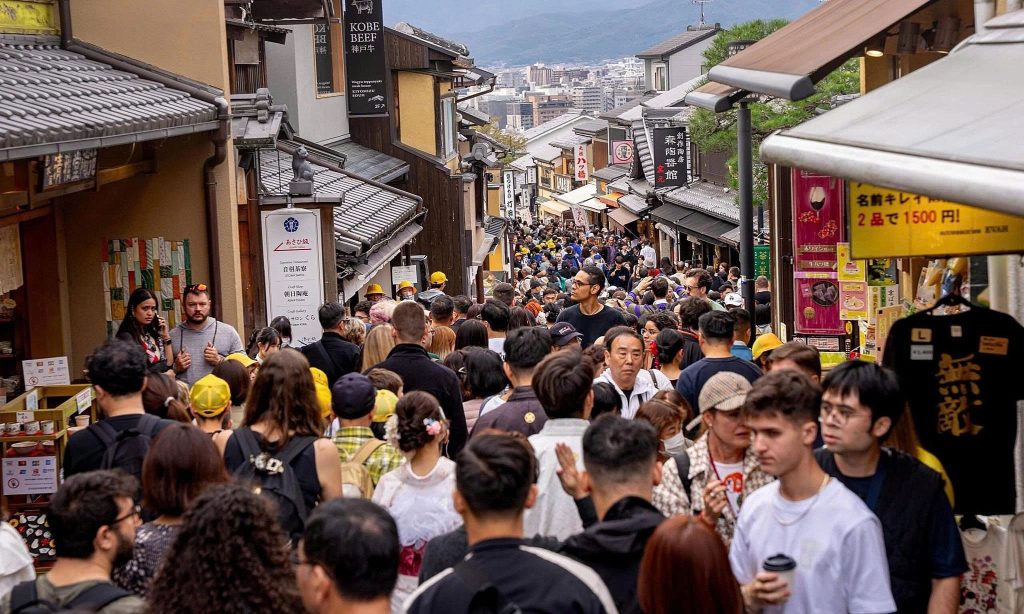The public baths in Turkey do not feature bathtubs, but instead offer the services of a “bath attendant” who cleanses and massages the customers’ bodies. The melodious sounds, the soft light filtering down from the domes onto the marble surfaces, and the sound of running water in the steamy air create the mystique of the Turkish public baths, or hamam.
The hamam is a vital place for social interaction, a tradition that has existed in Turkey since ancient times. “This was where women could socialize outside of their home without needing permission, escape their domestic roles, or even look for a wife for their sons,” shares Ahmet, a Turkish culture and history expert.
In the past, women from wealthy families were frequent visitors to the hamam. Some even had private hamams within their mansions. Each woman used her personal items, such as a tası (a bowl with embossed patterns, sometimes adorned with jewels) to pour water over her body. They also used embroidered silk or lace-trimmed linen fabrics, and the pestemal (a bath towel). Traditionally, these towels were made from cotton, with hand-stitched detailing.
Though called a bathhouse, there are no actual bathtubs inside a hamam. Each hamam has at least three distinct areas, carefully designed to enhance the experience. The design of the hamam is crucial because it represents a journey, from the moment one steps in until they leave.

The first area is the entrance, which always features a heating source. It comprises the changing room and a relaxation area for post-bath unwinding. A small door leads to the next section, which houses the toilets and the kurna (a marble basin). The main and largest area features a raised marble slab in the center, with several kurnas lining the walls. Some hamams have smaller adjoining rooms called halvet (hot rooms). The two main chambers are domed, and their height is always greater than their width. The openings on the dome contribute to the ambiance and enhance the feeling of space. “They look like stars in the sky, as if you are gazing at the cosmos,” Ahmet states.
Currently, there are about 60 operational hamams in Istanbul. Most smaller hamams will designate separate times for men and women, sometimes on different days. Only the larger hamams have separate bathing sections for male and female guests. Many hamams in Istanbul are open until 11 PM, but it is advisable to plan ahead and make a reservation.
Elif Kartal, the Customer Relations and Operations Manager at Zeyrek Cinili Hamam, who has worked in Turkish baths for nearly 20 years, mentions that most hamams offer a range of kese (a form of body scrubbing using a mitt) and Turkish foam massage services.
All hamams provide changing areas and secure storage for valuables. Some places may require you to provide basic health information. They often provide disposable underwear, but you are welcome to wear your own undergarments or swimwear. The kese process involves scrubbing the entire body, so it is generally not recommended to wear a one-piece swimsuit.

Elif Tamtartar, a female bath attendant at Zeyrek Cinili Hamam, has 25 years of experience. She learned kesecilik (the art of body scrubbing) before the age of 15 from her mother and grandmother. She advises customers to avoid hair removal before the bath and to refrain from using lotions or oil-based products the day before, as this reduces the effectiveness of the kese, causing the mitt to slip on the skin. She also recommends eating lightly before arriving and avoiding alcohol, as you might feel uncomfortable in the hot environment.
After changing and wrapping themselves in a towel, the bath attendants, separate for men and women, will be waiting. They guide you to the center of the bathhouse. There, you are rinsed with warm water and invited to lie down on a towel placed on the warm marble slab. The heat from the stone combined with the warm air offers a sense of absolute relaxation, and after 15 minutes of sweating, you might drift off to sleep. The attendant then pours water over your hair, face, and body, washing away the sweat.
After the rinse comes the kese session. The kese mitt is akin to coarse sandpaper in fabric form, used to scrub dead skin cells from the body. In the past, instead of the mitt, people used topuk taş (a type of pumice stone). Women of high status often had their pumice stones set in handcrafted silver cups and engraved with personalized designs.
The sensation of the skin being scrubbed with the kese mitt is quite peculiar—sometimes rough, sometimes ticklish, and even strangely warm. Almost every centimeter of the skin is addressed. A thorough kese includes the torso, arms, and legs, as well as the face, inner thighs, and down to the tailbone. If you feel the pressure is too strong or if you have sensitive skin areas, inform the attendant. Most attendants do not speak foreign languages, but they have been doing this job for many years and easily communicate with foreign guests through body language.
As the attendant scrubs, thin, dark layers of dirt and residue “fly off” the skin. Following this, a bath loofah is used to remove the remaining dead cells. Depending on the hamam, this loofah might be made from cotton, linen, or goat hair.
Once you are clean, it is time for the massage experience. The attendant creates foam by rubbing soap on a soft, wet cloth, inflating it before gently gliding it over the body in preparation for the massage. Most Turkish soaps are made from olive oil to cleanse without stripping the skin of its natural oils. Combined with the effects of the kese, the skin becomes soft and refreshed. Tamtartar says that the kese helps prevent aging. “The pores open up, and the cell renewal process is accelerated because the scrubbing is also an exfoliation,” she explains.
After the head washing phase is complete, you exit the bath chamber following the same path you entered. First, you should stop at the intermediate area to be dried and wrapped in fresh towels before returning to the cool room, the initial entrance area. It is not advisable to leave the hamam abruptly. Take time to relax, enjoy some tea, and when ready, gently return to the changing area.
Taking time to relax with warm water offers numerous benefits. With the hamam, it is not merely about physical cleansing. “Guests who come to the bathhouse forget their worries. The energy of the water, the space, and the people merge, and when those energies harmonize, it is an effective solution for healing,” Tamtartar concludes.
(According to CNN)

















